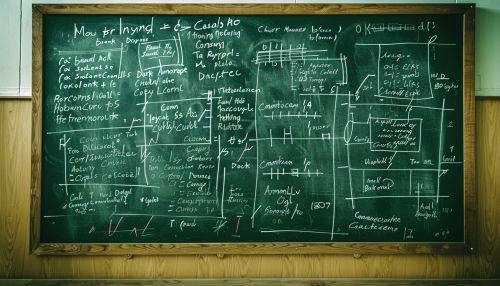Continuous simulation
Introduction
Continuous simulation is a type of computer simulation that uses mathematical models to represent the change of system states over time. Unlike discrete event simulation, where changes occur at specific points in time, continuous simulation models the system as a continuous process, with changes occurring continuously over time.
Mathematical Basis
The mathematical basis of continuous simulation lies in differential equations. These equations describe the rate of change of a system's state variables over time. The solutions to these equations provide the system's state at any given time, given its initial conditions.


Modeling Techniques
There are several techniques used in continuous simulation modeling. These include:
- Ordinary Differential Equations (ODEs): These equations describe systems where the rate of change of a variable depends only on the variable itself and time.
- Partial Differential Equations (PDEs): These equations describe systems where the rate of change of a variable depends on the variable itself, time, and other variables.
- Stochastic Differential Equations (SDEs): These equations describe systems where the rate of change of a variable depends on the variable itself, time, and a random component.
Applications
Continuous simulation has wide-ranging applications in various fields. These include:
- Physics: Continuous simulation is used to model physical systems such as fluid dynamics, heat transfer, and electromagnetic fields.
- Biology: In biology, continuous simulation is used to model population dynamics, ecological systems, and biological processes.
- Economics: Economists use continuous simulation to model economic systems, market dynamics, and financial processes.
- Engineering: Engineers use continuous simulation to model and design systems such as control systems, power systems, and communication networks.
Software Tools
There are numerous software tools available for continuous simulation. These include:
- MATLAB: MATLAB is a high-level language and interactive environment for numerical computation, visualization, and programming.
- Simulink: Simulink is a block diagram environment for multidomain simulation and model-based design.
- Modelica: Modelica is a non-proprietary, object-oriented, equation based language to conveniently model complex physical systems.
Advantages and Disadvantages
Like any other simulation technique, continuous simulation has its advantages and disadvantages.
Advantages include:
- Ability to model complex systems: Continuous simulation can model systems with complex dynamics and interactions that would be difficult to model with other techniques.
- Flexibility: Continuous simulation can model a wide range of systems, from physical to biological to economic systems.
Disadvantages include:
- Computational complexity: Solving the differential equations used in continuous simulation can be computationally intensive, especially for large, complex systems.
- Difficulty in modeling discrete events: While continuous simulation is excellent for modeling systems that change continuously over time, it can be challenging to model systems where changes occur at discrete points in time.
Conclusion
Continuous simulation is a powerful tool for modeling and understanding complex systems. By using mathematical models to represent system dynamics, continuous simulation provides a flexible and comprehensive approach to system analysis and design.
See Also


